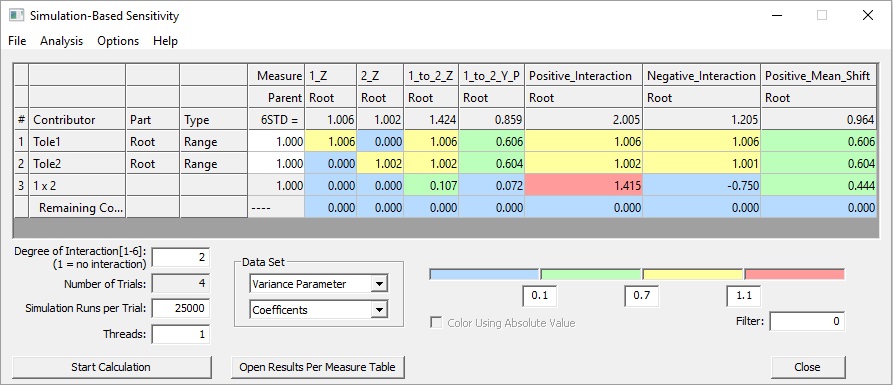An example model named SBS_Calculation.wtx is used to illustrate the SBS calculations. The 5th measure named Positive_Interaction is explained here.
In this model SBS is run with:
oDegree of Interaction = 2
oSimulation Trials = 25,000
oThreads = 4
There are two points with a linear tolerance of 1.00mm applied to each of them in (0, 0, 1) direction.
When only Tole1 is active, the measure 6-sigma is 1.006 mm
When only Tole2 is active, the measure 6-sigma is 1.002 mm
If these tolerance are independent (don't interact,) then the measure 6-sigma is expected to be 1.420 mm. Since we are predicting 6-sigma results, we use an RSS equation:
(1.006^2 + 1.002^2)^0.5
When both tolerances are active in the model, however, measure 6-sigma is 2.005 mm. The tolerances are interacting to magnify the measure variation.
To calculate the amount of interaction, we use this equation:
(2.005^2 - 1.006^2 - 1.002^2)^0.5 = 1.416 mm
This is within the rounding error of the value shown in the SBS matrix: 1.415 mm.

The equations get longer and more complicated when analyzing higher degrees of interaction.
This model is distributed with the 3DCS Example Models (Current Distributed Help\3DCS CAD & Example Models\Reference Models).